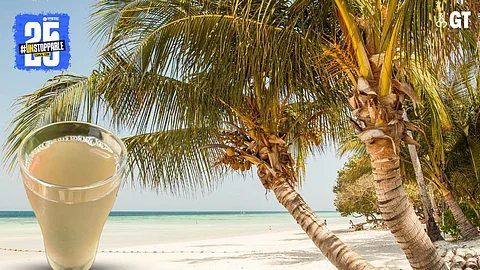

Recently, we celebrated the revival of rice cultivation in Goa with the ‘Baattachem Fest’ in Chinchinim, where Adv Agnelo Furtado and Fr George Quadros sdb showed how actions speak louder than words.
Festakar, Marius Fernandes was its agente provocateur much like he is for the ‘Potekarachem Fest’ at his home in Divar, this Carnival.
At the Baattachem Fest, there was an array of sweets made of rice. It, then, struck me that almost all of them were sweetened with grated coconut (or coconut milk) and jaggery. From fish-curry- rice to alle belle, almost everything had coconut and rice to make it nice.
CARNIVAL IN GOA
We are currently in the midst of Carnival – which begins on Sabado Gordo (or ‘Fat Saturday’ in Portuguese) and ends on Mardi Gras (or ‘Fat Tuesday’ in French).
These four days belong to the ephemeral reign of King Momo across Goa, subduing the Ranno ani Ranni tradition of Carnival in Mapusa since the end of the 1700s, when Bardez came under the attack of the chieftains of the yet-to-be-ceded talukas of Bicholim, Sattari and Pernem.
The festivity was initially fired up by the spirit of coconut feni, till the discovery that the ‘apples’, of then recently introduced cashew trees, could also be fermented and distilled.
Most of the cashew trees were planted in the ‘New Conquest’ talukas for soil conservation on hill slopes denuded by slash and burn kumeri cultivation. They are now the wealth of the Goa Forest Development Corporation (GFDC).
COCONUT, THE GOAN WAY
Almost everyone knows Cocos nucifera, the coconut tree, that provides us with tender coconut water, grated coconut (for Goan curry, vegetables and sweet meats), coconut milk and oil; besides fibre (for mattresses and ropes), long trunks (for instant bridges over nallahs, plus rafters) and thatch for shacks and huts.
In India, the coconut tree is known as the kalpvriksha, or a heavenly tree, that provides for all our needs. The people of Goa traditionally brought in the cheer with toddy or distilled its spirit as feni.
Cashew feni came in as a substitute, much like the mobile phone replaced the landline due to convenience. Even today, the Konkani expression for intoxication is "Sur marllea re?" because coconut toddy, or sur, was the earliest known intoxicant during the evolution of Amchi Bhas as a language.
Coconut palms produce one frond (leaf) and one spathe every month to a month and a half, thus producing eight to twelve spathes (flower bunches) per year. The oldest of the three unopened spathes is used for toddy tapping.
Sur is the original source of feni in Goa. The unfermented fruit sap of the coconut palm is the original neero which is making a comeback as a fresh drink along with slightly fermented sweet toddy, or godd sur.
These two drinks can easily replace soft drinks and champagne, if properly positioned and marketed as healthier alternatives.
The graduate lady toddy tapper (or renderia), Shweta Kushali Gaonkar has boosted toddy tapping, which was otherwise a dying profession in Goa. Despite becoming a farm manager, she hasn’t hesitated to climb coconut trees and tap toddy.
Dierdre Aquino (in Miramar) and now Chiara Viegas e Tulkar (in Navelim) have begun marketing fresh and chilled, sweet toddy, and it has received tremendous response from consumers. In fact, coconut feni is being revived just like rice cultivation, and we hope to get the GI tag for it, too.
We have something coco-nutty to celebrate this Carnival. Viva! Saud! Saludos! Enjoy it at Samba Square.